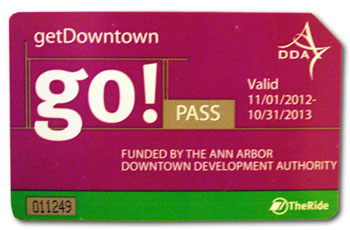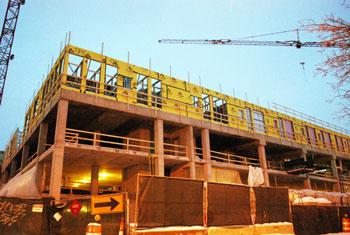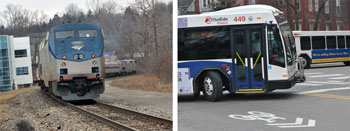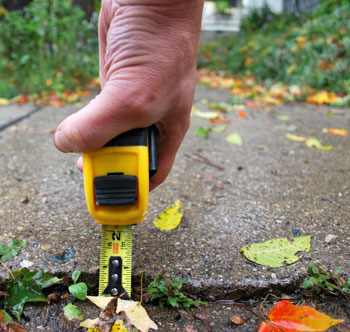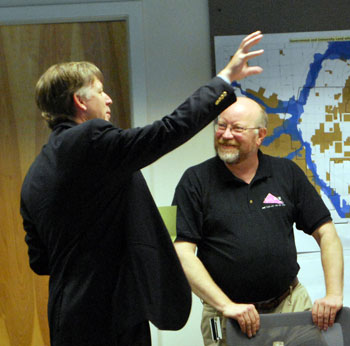At its Aug. 24, 2011 meeting, the Ann Arbor Transportation Authority board authorized a change to the price it charges for rides taken under the go!pass program. The go!pass can be purchased by downtown Ann Arbor employers for their employees at a cost of $5 per pass annually.
The change authorized by the board might go unnoticed for holders of the passes, who do not pay fares to board the bus, but will include an increase from $5 to $10 for the annual fee paid by employers. That’s an increase that will be implemented by the getDowntown program, which administers the go!pass program. However, in the action taken on Aug. 24, the AATA is actually lowering the price per go!pass ride.
Here’s why. Holders of the go!pass card can board the bus without paying a fare, and there are no limits on the number of rides that can be taken with the card. The cost of such rides is funded in small part by the $5/card fee paid by employers, but in largest part by revenues from the city’s public parking system provided through the Ann Arbor Downtown Development Authority. At its June 2, 2010 meeting, the DDA authorized three years worth of funding for the go!pass program. For the second two fiscal years of that funding, approval amounted to $438,565 (FY 2012) and $475,571 (FY 2013).
The number of rides taken using the go!pass has increased each year for the last decade, but has jumped significantly during the last year. [.jpg graph of go!pass ridership] In the past, the AATA has priced go!pass rides in a way that matches the revenue per go!pass ride to the amount that bus riders would pay if they paid the full fare under a regular 30-day pass – the cheapest full-fare option. So, as go!pass ridership has increased, the total amount charged by the AATA for the rides has also increased.
In the past, the DDA has increased its level of support to match what the AATA has charged. As the DDA is under increasing financial pressure due to the new public parking system management contract recently signed with the city of Ann Arbor, as well as a possible need to return excess tax increment finance (TIF) that was collected, it’s not anticipated that the DDA will be able to increase the amount it contributes to the go!pass program.
Given the levels of funding now pledged by the DDA, the price that employers would need to be charged per go!pass per year would be $26 – if the same policy is maintained of charging for go!pass rides so that their cost matches what the cheapest full-fare option would be.
In recent presentations to the DDA, Nancy Shore, the director of the getDowntown program, has recommended an increase from $5 to $10, not to $26. The advisory board of getDowntown has approved the increase to $10.
The action taken by the AATA board on Aug. 24 essentially sets the charge for go!pass rides at a flat rate – equal to the DDA’s current level of pledged support, plus an estimate that the total employer contribution (at $10/pass/year) would be $71,000 per year, based on the roughly 7,100 go!passes sold to employers so far this year. That is, the price charged for go!pass rides for the next two fiscal years will be $509,565 and $546,571, respectively – independently of the number of rides taken by go!pass holders.
The board’s action translates to a decision to accept a $16/pass/year shortfall in revenues from go!pass rides, compared to what the previous pricing policy has been, or roughly $113,600 (16*7,100).
This brief was filed from the downtown location of the Ann Arbor District Library, where the AATA board holds its meetings. A more detailed report will follow: [link] [Full Story]
